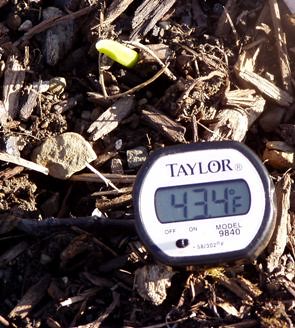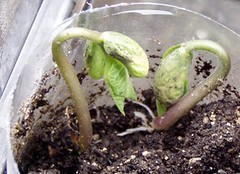 Let’s get down to some real “kitchen table economics” here: If you work for one of the financial/banking giants, it’s possible you might lose your job in the coming days or months. If you work for a company that borrows money to expand, operate or just plain keep going…it’s possible you might lose your job in the coming days or months. If you work for a governmental entity(state or municipal)…ditto. You get the idea.
Let’s get down to some real “kitchen table economics” here: If you work for one of the financial/banking giants, it’s possible you might lose your job in the coming days or months. If you work for a company that borrows money to expand, operate or just plain keep going…it’s possible you might lose your job in the coming days or months. If you work for a governmental entity(state or municipal)…ditto. You get the idea.
A lot of us are going to start feeling even more uncomfortable and insecure very soon, if we haven’t already done so. How to survive? For all the comparisons to The Great Depression, in my estimation, this is a whole new ballgame. Why? First and foremost: in 1929, people in the United States were not that far removed from subsistence living. Even people who lived in the largest urban areas still were doing many things for themselves, simply because the consumer economy behemoth did not exist the way it does today. The distance between farmers and other producers and consumers was not that far — consumers in New York City, for example, were buying their farm products from New Jersey and the counties in New York State within a couple of hours travel. No one was getting strawberries in January from California or Florida – that … did…not…exist. The whole economy of just going to a store and buying whatever you wanted/needed was much smaller than it is today; people many times had to make do, make over, or make their own.
My great aunties worked in the garment trade; one of them did put herself through secretarial school and graduated from the sewing machine to a typewriter at The American Tobacco Company. A real step up. Her sister sewed for a fancy ladies’ lingerie manufacturer her whole life. At home, they made their own clothing, were thrifty, and only indulged themselves on occasion. In the Depression, when their parents had to move out to Coney Island (because it was a lot cheaper than the Bronx), they all moved in together in a fifth floor walk up. They pulled together and reduced the entire family’s overhead. And they survived. The big book of the period was Five Acres and Independence (you can still get it from Amazon), aimed at people moving out of cities and surviving because they had a bit of land (actually, five acres is quite a chunk of property).
How are people going to survive the loss of major family income today — especially if they live someplace where either they don’t have a big yard or if they do, they might live where there are restrictive covenants (lawns of a certain size, planting of xx plants, no vegetable gardens where they can be seen, no hanging clothes on a clothesline outside and so on)? In a society where much of people’s image of themselves and their families revolves around financial resources rather than actual “do it for ourselves, thrift, etc.” skills, what are the possible outcomes for families who lose a big chunk of their income?
(originally published at Oxdown Gazette)

 And, welcome back. The last time we took the soil temperature in the garden in my part of Upstate New York, it was 32.9 degrees F. on March 7th. Hope Is A Thing With Dirt
And, welcome back. The last time we took the soil temperature in the garden in my part of Upstate New York, it was 32.9 degrees F. on March 7th. Hope Is A Thing With Dirt Hope, my friends (as John McCain is wont to say) is NOT a thing with feathers. This picture at the top is hope. Actually, no; that picture is of my garden on March 7, in the afternoon and the air temperature is 50 degrees and it is raining in that drippy, cold, remorseless way that we get up here in Upstate New York when it should be snowing instead..only it isn’t.
Hope, my friends (as John McCain is wont to say) is NOT a thing with feathers. This picture at the top is hope. Actually, no; that picture is of my garden on March 7, in the afternoon and the air temperature is 50 degrees and it is raining in that drippy, cold, remorseless way that we get up here in Upstate New York when it should be snowing instead..only it isn’t. In my part of the world, right now, there is snow and ice everywhere and frozen soil, but we can dream of a garden. And for those folks who have been doing their homework and have gotten their seeds, it’s time to take out the calendar and start planning for actual planting in the ground, so that you can figure out when you are going to plant your seeds.
In my part of the world, right now, there is snow and ice everywhere and frozen soil, but we can dream of a garden. And for those folks who have been doing their homework and have gotten their seeds, it’s time to take out the calendar and start planning for actual planting in the ground, so that you can figure out when you are going to plant your seeds.  OK. We are NOT in the kitchen today. This is for those folks who read, way back in October, about starting a garden and perhaps went to their land fill or composting facility and picked up some compost and put out the cardboard and now have …frozen piles of compost out in the yard that has snow all over it. It’s hard to get romantic looking at that stuff – but trust me, in the spring, you will be happy you did the work.
OK. We are NOT in the kitchen today. This is for those folks who read, way back in October, about starting a garden and perhaps went to their land fill or composting facility and picked up some compost and put out the cardboard and now have …frozen piles of compost out in the yard that has snow all over it. It’s hard to get romantic looking at that stuff – but trust me, in the spring, you will be happy you did the work.  OK, so you say you want a garden next spring. And you say you’ve tried to do it before and you just never got around to it…and this makes you feel worthless and unambitious and un-American?
OK, so you say you want a garden next spring. And you say you’ve tried to do it before and you just never got around to it…and this makes you feel worthless and unambitious and un-American? lokywoky in a thread asked: What I would like to know is what all of us lowly apartment and other rental unit dwellers who don’t have yards for gardens and no control over the kind of heating/cooling equipment etc are supposed to do. Info is all over the place for stuff for home OWNERS but there doesn’t seem to be much for those of us who don’t own a home.
lokywoky in a thread asked: What I would like to know is what all of us lowly apartment and other rental unit dwellers who don’t have yards for gardens and no control over the kind of heating/cooling equipment etc are supposed to do. Info is all over the place for stuff for home OWNERS but there doesn’t seem to be much for those of us who don’t own a home. Let’s get down to some real “kitchen table economics” here: If you work for one of the financial/banking giants, it’s possible you might lose your job in the coming days or months. If you work for a company that borrows money to expand, operate or just plain keep going…it’s possible you might lose your job in the coming days or months. If you work for a governmental entity(state or municipal)…ditto. You get the idea.
Let’s get down to some real “kitchen table economics” here: If you work for one of the financial/banking giants, it’s possible you might lose your job in the coming days or months. If you work for a company that borrows money to expand, operate or just plain keep going…it’s possible you might lose your job in the coming days or months. If you work for a governmental entity(state or municipal)…ditto. You get the idea.